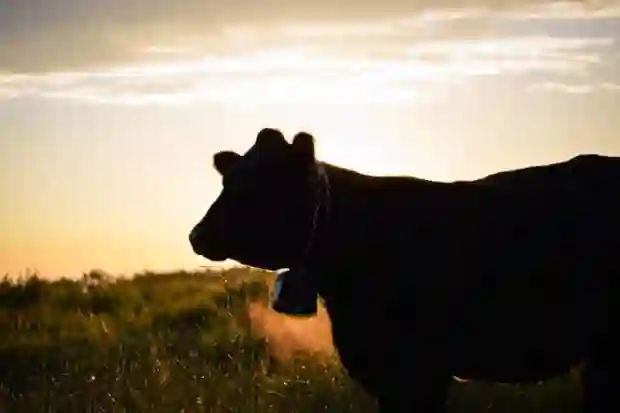In an interview at this year’s Farm Progress Show, New Holland Brand President Carlo Lambro says...
University of Alberta Researchers Study How to Corral Cattle With an iPhone

Cattle domestication began some 10,000 years ago. Controlling the movements of the creatures has been a human endeavor for millennia, using all manner of tools from herding dogs to electrified fences. Now, it can be done with an iPhone.
A University of Alberta research team is looking into how virtual fencing can be used in cattle ranching. By looking at how the technology works and how it may affect production, the hope is to provide relevant, concrete information for producers interested in adopting it.
Virtual fencing is a technology that tells cattle where a virtual boundary is through audio warnings and electric shocks. It's not intended to replace physical perimeter fences -- but to be used as a kind of cross fencing, dividing the main pasture for rotational grazing.
Alex Harland, a graduate student at the University of Alberta studying virtual fencing, said the technology can help farmers save money in the long run. "Cross fencing is very expensive and moving animals is very labor intensive," she said in a recent interview.
The technology is available through Norwegian company Nofence. A collar resembling a plastic cowbell is put on cattle and powered with solar panels along the sides. Harland said that once equipment is put on and the cattle have been trained on how to use it, all you need is the accompanying app on your phone. "You basically draw with your finger what you want the boundaries of your pasture to look like, and then that information gets downloaded to the collar."
If the virtual boundary is crossed, the cattle will get a warning sound. The cattle are then trained to turn the other way, according to Harland. If they don't, they will get an electric shock. That warning and shock can happen up to three times, after which the user will be notified that the animal has escaped and the collar goes to sleep.
Seventy-six virtual fence collars are being used at the University of Alberta Roy Berg Kinsella Research Ranch. Harland's research focuses on 39 cow-calf pairs and three bulls and looks at whether the technology is effective, how herds respond to it, and how it can be used to do rotational grazing.
Harland said that while some may be concerned about the impact the electric shocks have on cattle, the strength is about one sixth of a normal electric fence — and the cattle learn to avoid shocks with time. "They will continue to graze at the boundary as that audio warning goes until the very end. And then they break off and avoid the shock and then they will come back."
One question for the study was to look at whether virtual fencing has effects on the health and wellness of the cattle in terms of weight or conception rates. But according to Harland, her preliminary data hasn't shown a correlation between weight gain and the shocks from the collars. And the conception rate for the heifers was within the normal range.
One barrier that Harland did hear from ranchers was a lack of internet connection. "Looking for more technology solutions to network connectivity issues I think will be huge and will bring this sort of technology to be more accessible to more ranchers and people," said Harland.
Lance Neilson who runs a cow-calf operation near Stettler, Alberta, said that farmers have known this technology was coming for a long time. "It's something that's been in the back of my mind for quite a few years," he said. "Precision agriculture in grain farming has been here for about 20 years. Cattle farming is just waiting for technology to catch up."
Neilson paired with Olds College to pilot virtual fencing on four of his cattle. "It exceeded my expectations," he said.
Nielsen said the biggest appeal is the ability to do more precision grazing, a grazing technique that uses technology to allow a quick and efficient rotation on a regular basis. He explained that this allows for more effective use of the pasture, promoting grass growth and greater carbon sequestering into the soil. "There really are so many benefits and it allows me as the producer to get more grazing days out of the same land."
EDITOR’S TAKE:
Virtual fences for dogs are at work in many U.S. subdivisions already, so one for cattle is not far fetched at all. What stands out about the research taking place in Alberta is the study of impacts on health and efficiency of the animal with the use of such technology. Apparently, it is working well to date and the Canadian farmers/ranchers appear to see promise. The next question that will demand answers is – how does the cost of a virtual fence compare with that of conventional fencing. Obviously more research and proof will be needed before widespread adoption occurs, but it is a great first step. If proven, it will spread quickly. Our farmers/ranchers are keen on the use of technology to help them better manage their operations and their time. Let them know how the technology you have available can help them maintain their trucks and keep running when those vehicles are needed most!








